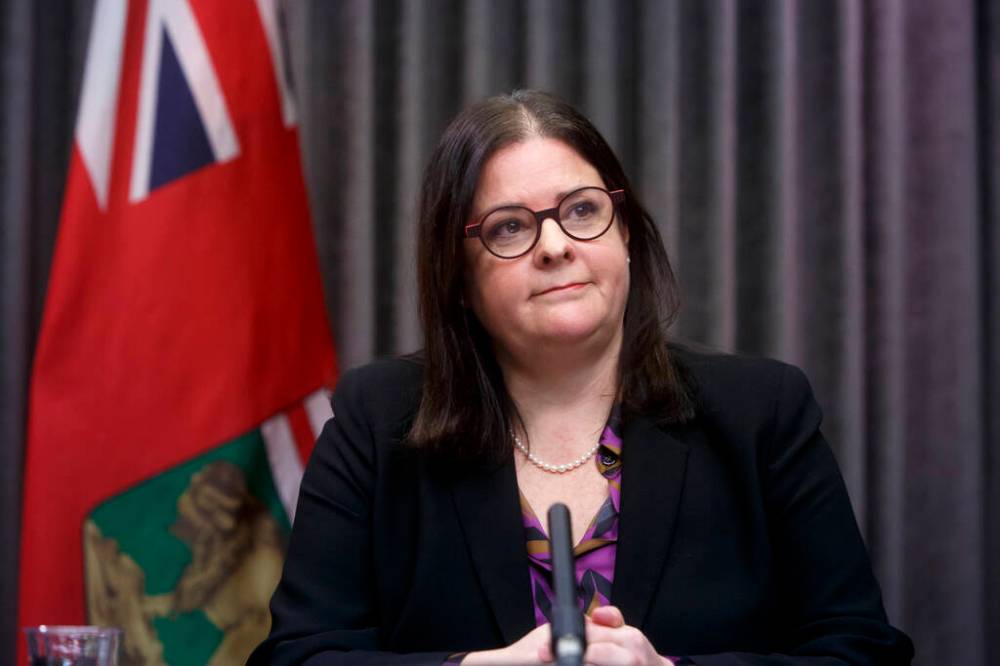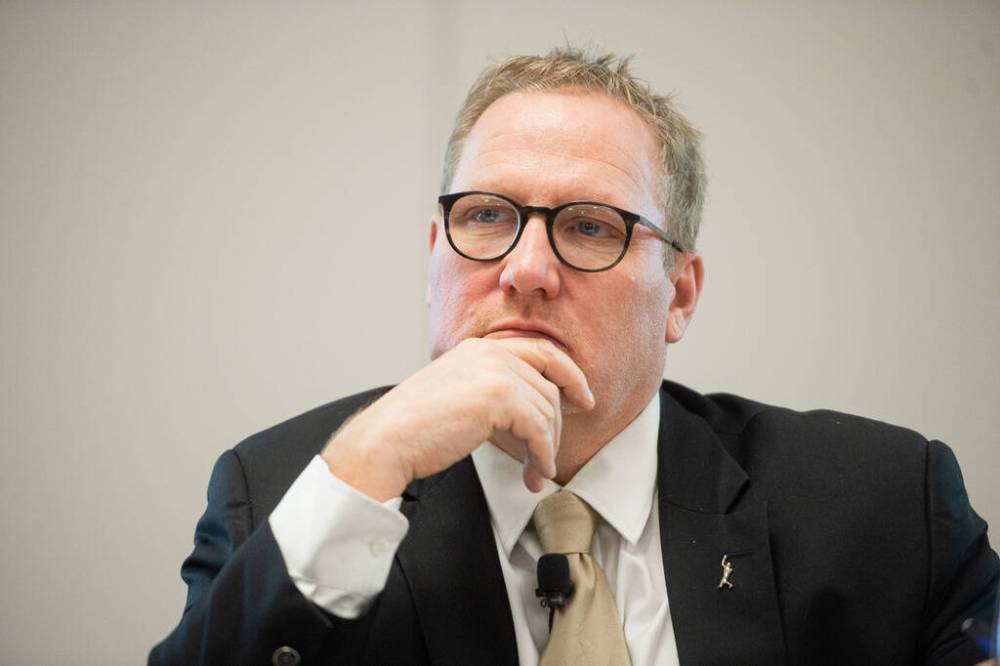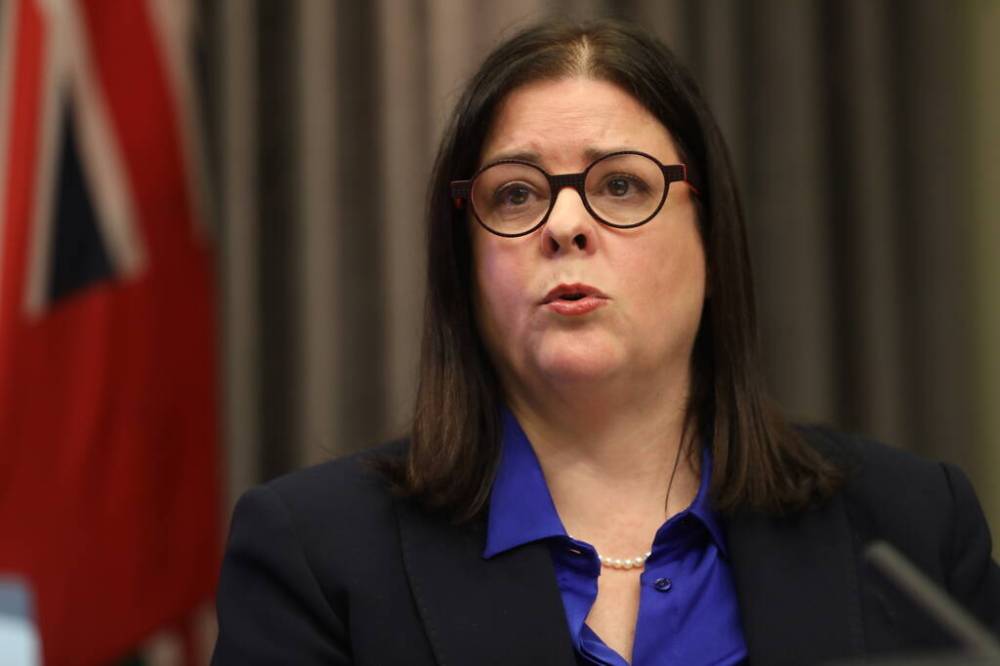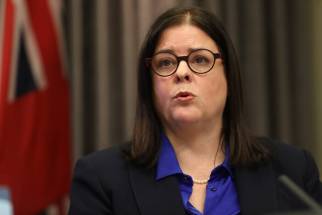Stefanson should be in wound-healing mode With province in stronger-than-expected financial position premier’s first budget should address post-pandemic surgery backlog, hospital capacity
Read this article for free:
or
Already have an account? Log in here »
To continue reading, please subscribe:
Monthly Digital Subscription
$0 for the first 4 weeks*
- Enjoy unlimited reading on winnipegfreepress.com
- Read the E-Edition, our digital replica newspaper
- Access News Break, our award-winning app
- Play interactive puzzles
*No charge for 4 weeks then price increases to the regular rate of $19.00 plus GST every four weeks. Offer available to new and qualified returning subscribers only. Cancel any time.
Monthly Digital Subscription
$4.75/week*
- Enjoy unlimited reading on winnipegfreepress.com
- Read the E-Edition, our digital replica newspaper
- Access News Break, our award-winning app
- Play interactive puzzles
*Billed as $19 plus GST every four weeks. Cancel any time.
To continue reading, please subscribe:
Add Free Press access to your Brandon Sun subscription for only an additional
$1 for the first 4 weeks*
*Your next subscription payment will increase by $1.00 and you will be charged $16.99 plus GST for four weeks. After four weeks, your payment will increase to $23.99 plus GST every four weeks.
Read unlimited articles for free today:
or
Already have an account? Log in here »
Hey there, time traveller!
This article was published 01/03/2022 (1377 days ago), so information in it may no longer be current.
When Premier Heather Stefanson’s government brings down its first budget next month, the province will be in far better financial shape than it was a year ago. The question for the Tories is, do they use the newfound wealth from higher taxation revenues to balance the books quicker, cut taxes or spend more on front-line services?
Government will undoubtedly claim it’s doing all three by taking a “balanced approach” when it unveils its 2022 budget, likely in April. They will talk about “investing” in front-line services, keeping taxes “affordable” and remaining “fiscally responsible” at the same time.
There’s nothing wrong with that approach. However, there are still decisions to be made within that framework. A “balanced approach” can mean anything government wants it to.
The 2022 budget will be the first under Stefanson. So far, she has not strayed from her predecessor’s (former premier Brian Pallister) plan to eliminate the deficit by 2028. However, the last time the Tories unveiled a multi-year plan to balance the books, they reached their goal in less than half the allotted time.

The Pallister government balanced the books in 2019-20, three years after taking office, but fell back into the red almost immediately after the COVID-19 pandemic struck.
Their “balanced approach” during the first three years in office favoured an accelerated deficit-reduction plan over spending increases for some front-line services. That came at a cost during the pandemic, as an underfunded health-care system struggled more than it would have had government not forced spending cuts on regional health authorities.
The Tories posted a pandemic deficit of $2.1 billion in 2020-21 — by far the highest in the province’s history. Former finance minister Scott Fielding chipped away at the shortfall the following year, knocking it down to a projected $1.6 billion. Thanks, in large part, to a better-than-expected economy, the deficit is forecast to decline further to $1.1 billion for the year ending March 31, according to Manitoba Finance’s mid-year fiscal update.

With Manitoba’s retail trade and manufacturing shipments up significantly compared to a year ago and employment growth among the strongest in the country, the fiscal picture for the Stefanson government looks a lot brighter than it did a year ago. Manitoba can expect significant increases in income and consumption-tax revenues.
Federal transfer payments (which have grown nearly 50 per cent since the Tories took office and are a major reason why Manitoba was able to balance its books in 2020) are also projected to grow by $301 million, or 6.2 per cent, in 2022-23, according to figures released by Ottawa in December.
There are risks government must consider this year, including the possibility that COVID-19 overwhelms hospitals again, or that Russia’s invasion of Ukraine escalates further and has a profound impact on the local economy.
Outside of those potential developments, the Stefanson government will have a lot more fiscal flexibility than it thought it had even six months ago.
There are risks government must consider this year, including the possibility that COVID-19 overwhelms hospitals again, or that Russia’s invasion of Ukraine escalates further and has a profound impact on the local economy.
Given the significant needs in health care, the prudent choice would be to allocate most of that added fiscal capacity to reducing surgical backlogs and expanding hospital capacity. That should be government’s top priority right now.
There is no logical reason to accelerate the balanced-budget timeline. The province is not at risk of a credit-rating downgrade. Its debt-to-GDP ratio, forecast at 36 per cent this year, is four percentage points below what the province projected a year ago. Balancing the books by 2028 is a reasonable timeline that doesn’t need to be altered.
Meanwhile, cutting taxes before the books are balanced shouldn’t even be on the table. Reducing tax rates while running deficits, something Pallister insisted on as recently as last year, would be fiscally irresponsible. There may be some minor tinkering on taxes in next month’s budget, but it would be surprising — and reckless — if there were any major cuts.
Reducing tax rates while running deficits, something Pallister insisted on as recently as last year, would be fiscally irresponsible.
For the Stefanson government, a “balanced approach” in this budget should be one that focuses mainly on healing the wounds of the pandemic on the front lines, including significant funding increases in health care. With a general election a year-and-a-half away, that approach would be good politics and good policy.
tom.brodbeck@freepress.mb.ca


Tom has been covering Manitoba politics since the early 1990s and joined the Winnipeg Free Press news team in 2019.
Our newsroom depends on a growing audience of readers to power our journalism. If you are not a paid reader, please consider becoming a subscriber.
Our newsroom depends on its audience of readers to power our journalism. Thank you for your support.









